Interview: Leigh Whannell Revives The Invisible Man
It’s been a long time since there’s been a film iteration of H.G. Wells’s The Invisible Man with Paul Verhoeven last giving it a go 20 years ago with The Hollow Man, starring Kevin Bacon. Universal Pictures has been trying for a while to get something going for one of their Classic Movie Monsters, although the attempt to create a shared “Dark Universe” with Johnny Depp in the unseen title role just didn’t pan out.
Along comes mega-producer Jason Blum, who brought Leigh Whannell on board to write and direct a new take on The Invisible Man. The two of them have collaborated on the Insidious series, as well as Whannell’s 2018 cyberpunk thriller, Upgrade.
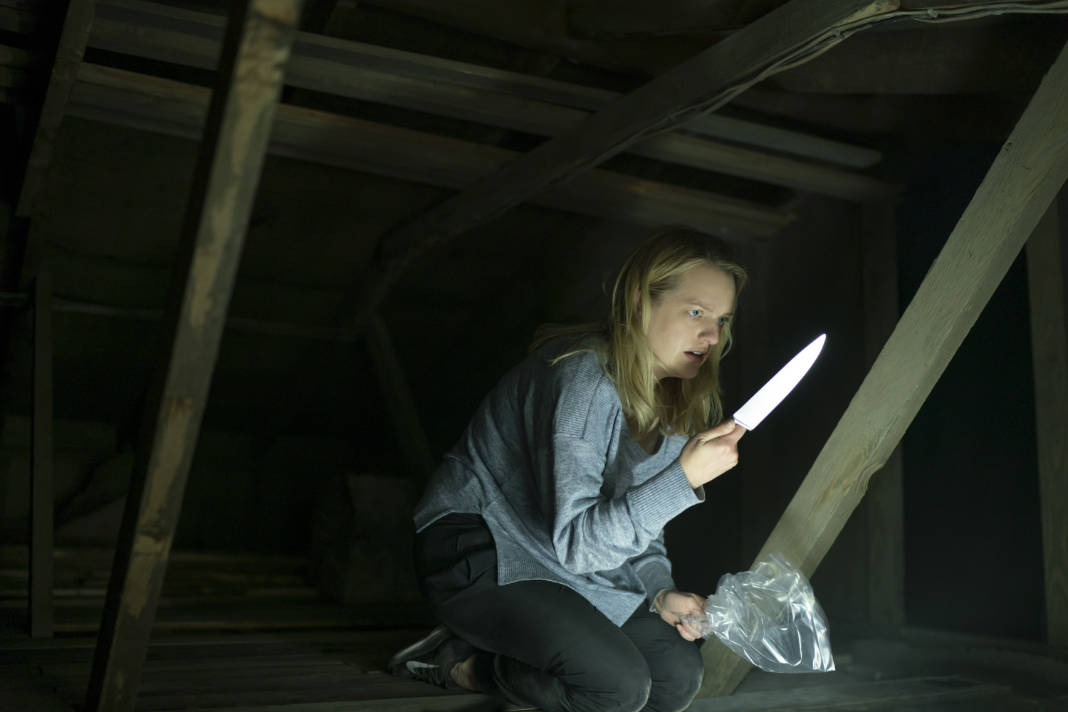
Whannell devised a modernized version of Wells’ sci-fi thriller with Elisabeth Moss (The Handmaid’s Tale and Mad Men) as Cecilia Kass, a woman who is absolutely terrified of her abusive ex, Adrian Griffin (Oliver Jackson-Cohen from Netflix’s The Haunting of Hill House).
Soon after leaving him in the middle of the night, Cecilia learns that Griffin has committed suicide. She thinks she’s safe but soon learns that his terrifying toxic behavior has continued well beyond his alleged demise. And guess what? He’s invisible!
Vital Thrills got on the phone with Whannell from the film’s L.A. junket a few weeks back for the following conversation, in which we took a slight tangent into one of Whannell’s earlier collaborations with James Wan, Dead Silence.
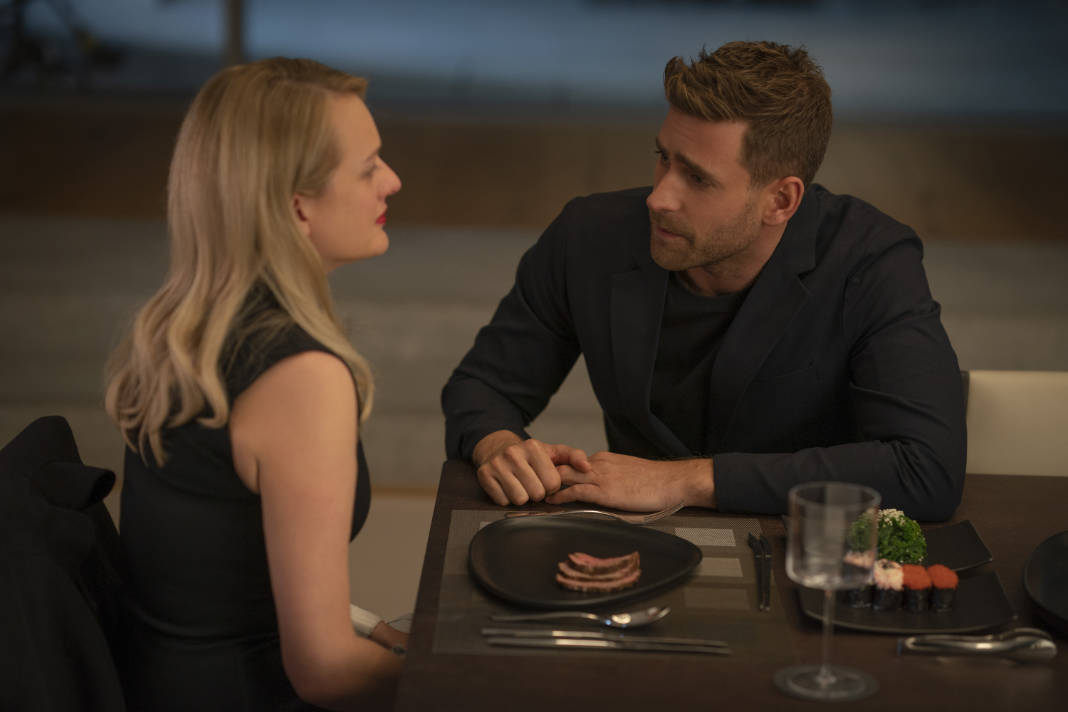
Vital Thrills: I know that Universal had been trying to do classic monsters for a while, and I know Jason Blum came on board fairly soon before you did, so did this just come out of a general meeting?
Leigh Whannell: Yeah, it was really just a general meeting with the Blumhouse people and the Universal people, and I thought it was going to be all about Upgrade and how great that movie was [laughs], so I was all prepared to hear some praise. Then, we started talking about Invisible Man, and I was kind of mystified because it was very random. It’s like you talking to someone, and suddenly they bring up napkins, like, “What do you think about napkins?” You’re like, “I like them. I’m not sure why we’re talking about napkins.” It was interesting, and they kind of incepted me.
It was very Chris Nolanesque because as soon as I left the meeting, this parasite had burrowed its way into my brain, and it wouldn’t leave. I couldn’t stop thinking about this character and how you can modernize it and make it scary. I was like, “Okay, fine, I’ll take the job.” Next thing I knew I was writing another movie. I never intended to write a movie so quickly after finishing Upgrade. I usually like to take a break and get back into the real world because making a movie is such a headf*ck, but with this one, I left straight from one project to the next very quickly. I’m glad I did because I really had a good experience making this.
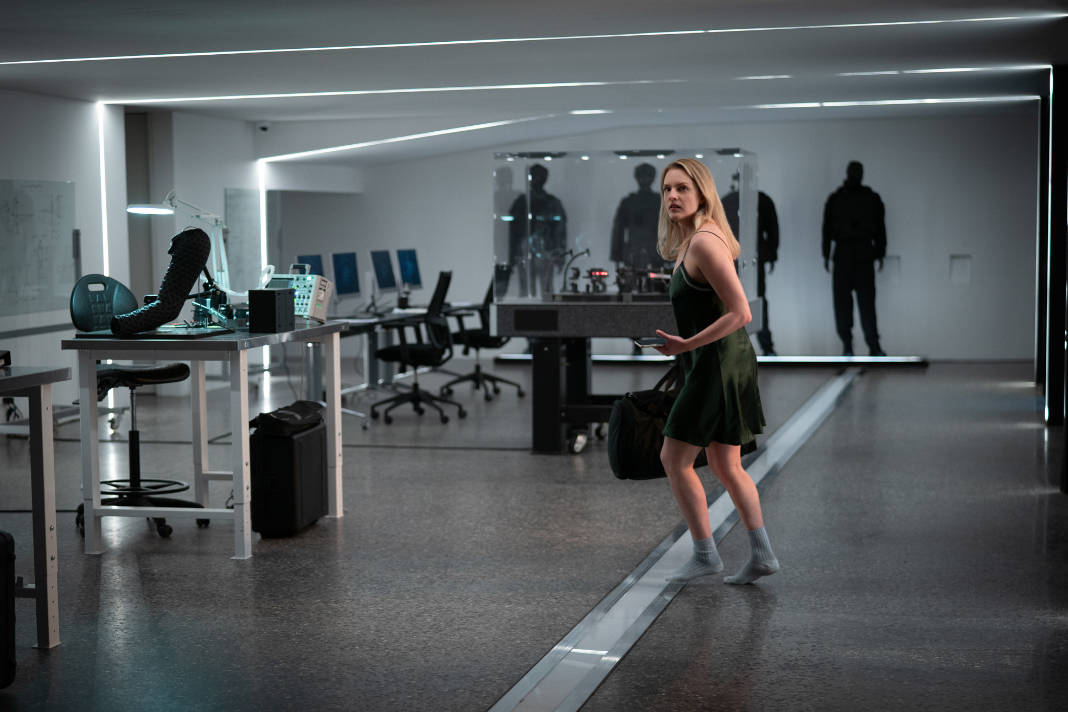
VT: Had the whole Johnny Depp and Dark Universe plan already fallen, by the way, or was that still in the mix?
Leigh Whannell: I’m not sure. I have never done my homework on that. I think when that all happened, I was making Upgrade in Australia, so I kinda missed the boat on that whole announcement. I’ve learned more about it since, but it was never brought up to me. No other iterations of the Invisible Man or any other characters were brought up. It was always about a standalone movie, and I was just single-minded in my goal of making something stressful, something suffocating, tense, and something grounded that the audience could believe would really happen.
VT: I stayed through the whole end credits, which I don’t always do, ‘cause I was sure that you would have Russell Crowe show up in an end credits tag since you filmed in Australia.
Leigh Whannell: Right, no cameos from Russell Crowe on this one. Maybe on the next one, but no, none of that.
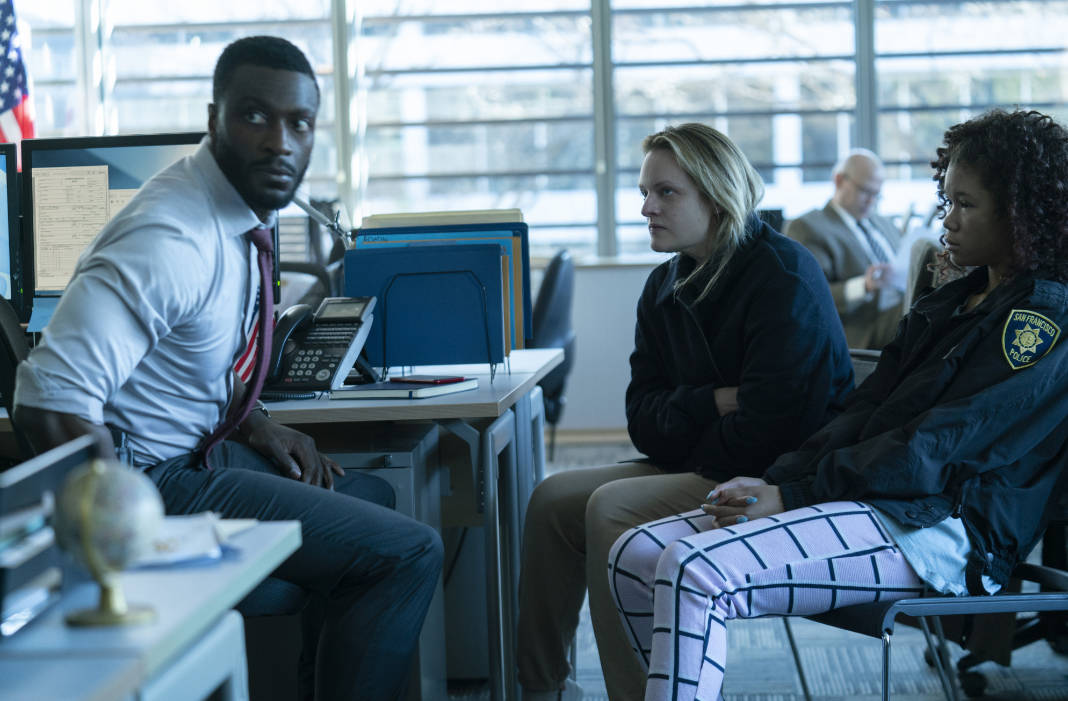
VT: Was Liz already in the mix when you got involved?
Leigh Whannell: No, she wasn’t attached at the beginning. I was essentially left to write the script. I wrote it the way I wrote anything. I was in my office at home, fleshing it out and working on it. It’s always an uphill battle writing a screenplay, so I went through that every day and carved something out. I submitted it to Universal and Blumhouse, and they liked it. They really responded well. It really felt very organic. There were none of those difficult births that some films go through sometimes in the development process. It felt like it was rolling downhill quickly.
All of a sudden, we were shooting in Sydney, and Elisabeth got involved once we were all happy with the script. She was one of the names on this list of great actors that we wanted to go to, and she responded really quickly. Before we knew what was happening, I was on the phone with her. Everything kind of fell into place. Maybe I’m looking back with fond nostalgia for something that was more difficult than I remember, but it does feel like it all fell into place pretty naturally.
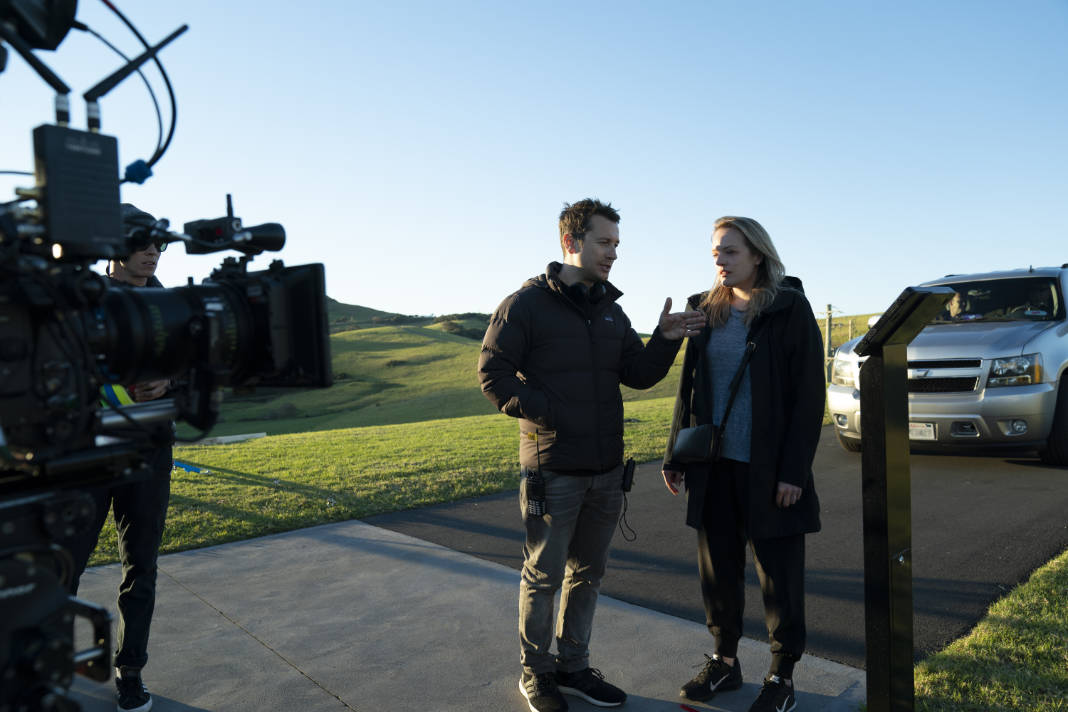
VT: I know you did a movie with Universal before, and it was a while ago and probably a different Universal than it is now, I assume.
Leigh Whannell: Yes! [laughs] Yeah, Dead Silence was not fun for me. It was funny. Dead Silence was my Hollywood trial by fire. When I first moved over here, it was like the land of Oz, the Emerald City. James Wan and I came here. We were wide-eyed, naïve film students, and all of a sudden, we were making our film, and we made Saw. We didn’t care how low the budget was because we’d never made anything that had a budget of more than ten bucks before in our life, so the idea that we were shooting this horror film in Los Angeles was crazy to us. And then we got our asses kicked by reality.
Once [Saw] came out and did well, we suddenly had a lot of meetings, as you do, and people bring you into their plush offices and sit you down and tell you how great you are, and it’s easy to be seduced by that. Before I really had a concrete idea, I had signed up with Universal to write this movie. We definitely went through the wringer on that one. There were so many drafts. James had a difficult experience, and I think I learned everything not to do from that movie. I’m actually glad that it happened because it kind of reshaped my viewpoint on what I wanted to be doing. I became very resolute about never working on something unless I was completely sure about it.
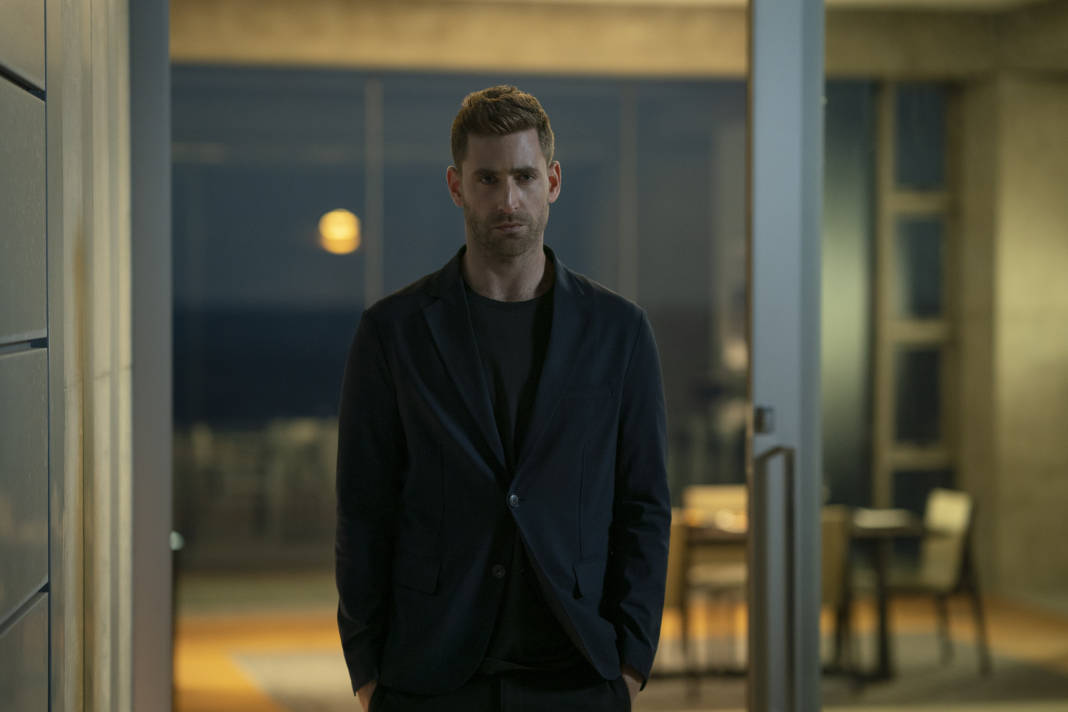
To this day, I still have the scars from that experience, which is “Don’t do something unless you are fully 100% passionate about it.” What has been interesting is to watch this cult of Dead Silence grow in a tiny microscopic corner of the internet. People are saying, “This is a great movie,” and it’s a very tiny club with members in the double digits at best, but it is interesting to see it happening. I think there’s something about being the underdog; I think the internet creates contrarians. You want to be the person that goes, “Well, I don’t care. I LOVE Problem Child,” and you want to go against the grain and call out the thing that’s not being called out, and conversely, you want to be the person saying, “Well, this movie sucks. Everybody else likes it, but I didn’t like it.” It’s all about disrupting the internet, like “Pay attention to me!” That’s the subtext of every tweet. “Listen to me!”
VT: I’m hoping to get the Alamo to play the movie since I’m hoping to build that cult.
Leigh Whannell: Oh, wow. Look, if you can get a 35mm screening of Dead Silence at the Alamo in L.A., I’ll turn up and answer questions, and we’ll have a little cult movie Rocky Horror Picture Show screening of the movie.
VT: Well, I’m still in New York…
Leigh Whannell: Well, you’re gonna have to come to L.A. for this one or you’re gonna have to fly me out to New York. I’ll make either work.
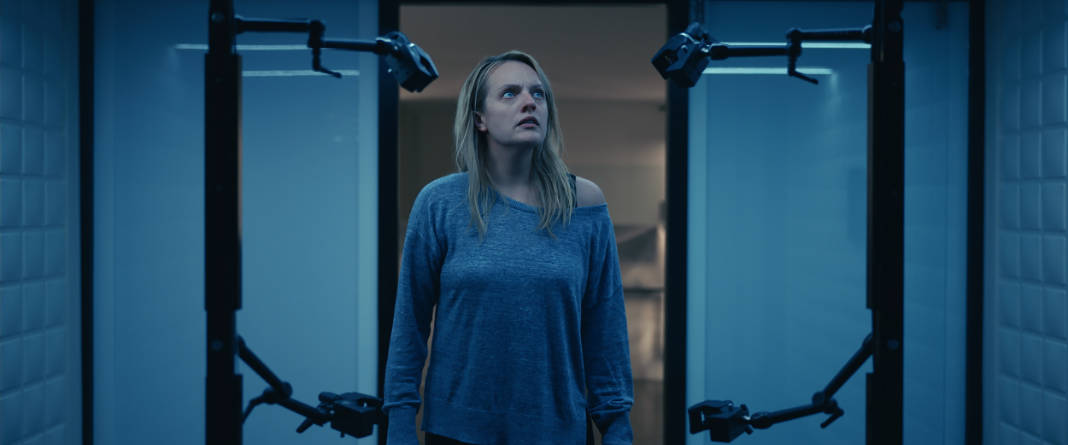
VT: Going back to Invisible Man, what were your conversations with Liz like as far as focusing on the victim rather than the monster, which has been the norm of the previous movies in a sense?
Leigh Whannell: It seemed so natural to me. The first thought I had when the character was brought up to me was, “Okay, to make this character scary, you have to make him mysterious.” The film can’t be about him. It has to be about the person being stalked by him. Once you center the film around the person that the Invisible Man is gaslighting and stalking and torturing, you suddenly become afraid of the Invisible Man and what he’s capable of. It just seemed like a very natural way to go with this story, and that was from the very beginning, that very first meeting where the title “The Invisible Man” was floated to me, I immediately went in that direction, and it never really changed. The finished movie that you saw is not that much different from the first draft in terms of structure.
VT: That’s great. One thing I really liked about the movie was something you nailed, and that’s the tone and the use of sound and silence to create tension. When James did the first Insidious movie, I think that really clicked with him, and I think with this movie, that really flicked with you how to use those two things.
Leigh Whannell: When you have a movie called The Invisible Man, you know you’re not gonna be using visuals to scare people. It’s going to be about sound design. I really love sound design. I actually went to a film school that specialized in film sound. They weren’t as interested in visuals as they were in sound, which is really unique in the world, possibly the only film school in the world that concentrates mostly on sound. James Wan and I, when we came out of that film school, had this interest and desire to make films that sounded interesting. I feel like sound, in general, gets such short thrift.
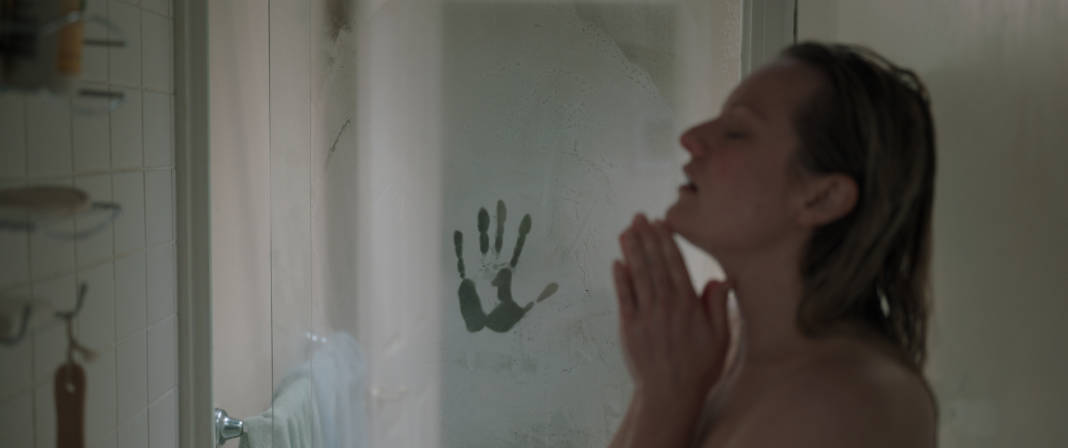
Everybody’s devoted to this idea of the heroic cinematographer. There’s a lot of heroism and grandeur that captures the image, and rightfully so. There are amazing cinematographers in the world, but sound just doesn’t come up in the conversation. Even the most hardcore cinephiles that are chattering away on Twitter, I just don’t see them talking about sound very much in anything more than a passing and flippant way. The sound design is just so crucial. They’re truly the unsung heroes, I feel. It’s the last frontier of moviemaking is the sound.
We worked really hard on it. Will Philes (SP) was the mixer, he’s a super-talented mixer. PK Hooker was the sound designer, he’s great to work with. I worked with both of them on Upgrade, but on this one, we just went to town because we knew that we had a license to, given that we’re making an “Invisible Man” movie, that automatically allows us to go crazy with the sound and use the Dolby Atmos and surround sound to create this dread.
VT: It really worked. Speaking of visual effects to create the Invisible Man, did you have the actual actor who played Griffin, was he still involved in terms of being in the room with Liz during those scenes?
Leigh Whannell: Yeah, sometimes I would. Sometimes, we would, sometimes we wouldn’t. There was no one approach. We would just do whatever it took to get the scariest thing. That’s all I cared about; the end result was. There were a couple of times when we had Oliver Jackson-Cohen in the green body suit, and then other times, we’d have a stunt performer. It really depends on what that singular thing calls for. When you make a feature film, what you really do is make 50 short films. That’s what it feels like. Every day, you go home, and you’re like, “Well, how did that short film work out?” And then you tackle the next one and the next one. At the end of it all, you hope that when you glue all these short films together, it makes some sort of cohesive sense. Each short film was approached differently, depending on the needs of the scene.
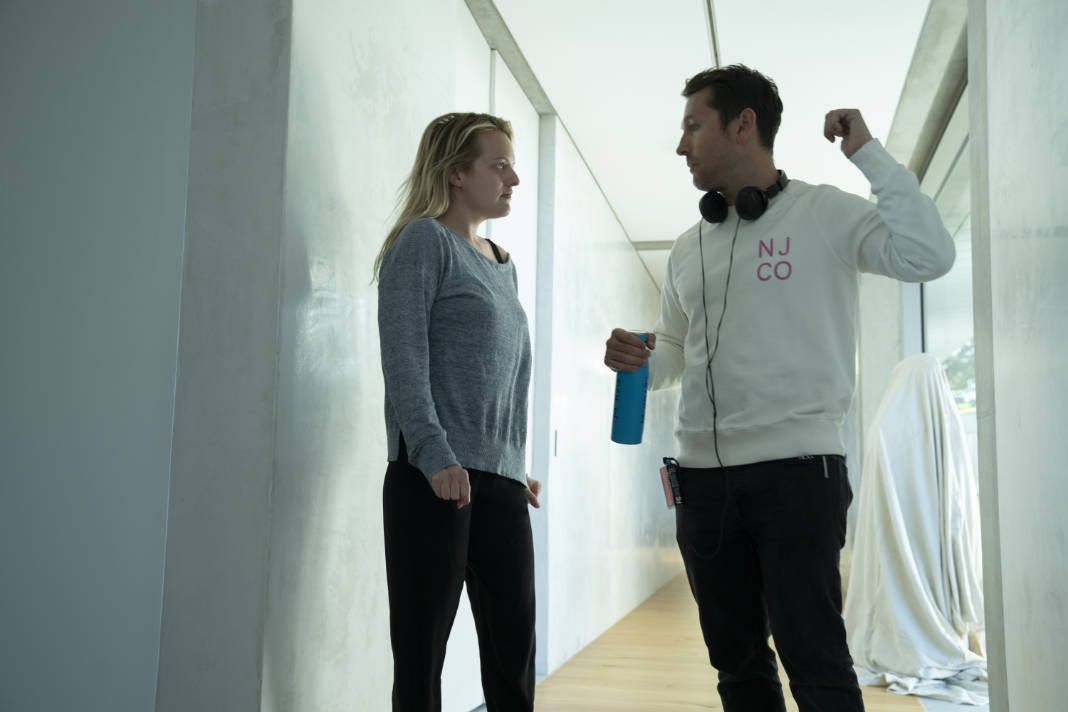
VT: As I was watching this, it was hard for me to forget the James Whale Invisible Man movie from the ’30s, where they were just shaking shelves and all sorts of craziness to make it seem real.
Leigh Whannell: We did that as well, though. We had absolutely some practical FX that would have been used on the original Invisible Man. We had props guys hiding behind the wall with ropes and strings, pulling shelves over, opening doors, and all that old-school stuff. What doesn’t matter is the “how.” All that matters is the “what” – it’s the end result, so I don’t care if it’s a cable that’s pulling the door closed as long as the audience is fearful of this door closing.
VT: I’m always fascinated by the real locations in movies versus the ones that are created or pieced together. Is Griffin’s place a real house you used?
Leigh Whannell: Yeah, it’s actually two houses that we kind of glued together, but it was something I was really stringent about finding. It took a long time to find the best location because I had a very specific idea about what Griffin’s house should look like and how it should feel. I wanted it to be a beautiful prison and it’s hard to find that. People don’t build that in Australia. They’re trying to build “friendly houses that are fun to live in!” They’re not designing a cold, austere house – they want something that the kids can grow up in. It took a lot of time to find this house, and it was a beautiful home that won many architectural awards, but it just felt right for this movie.
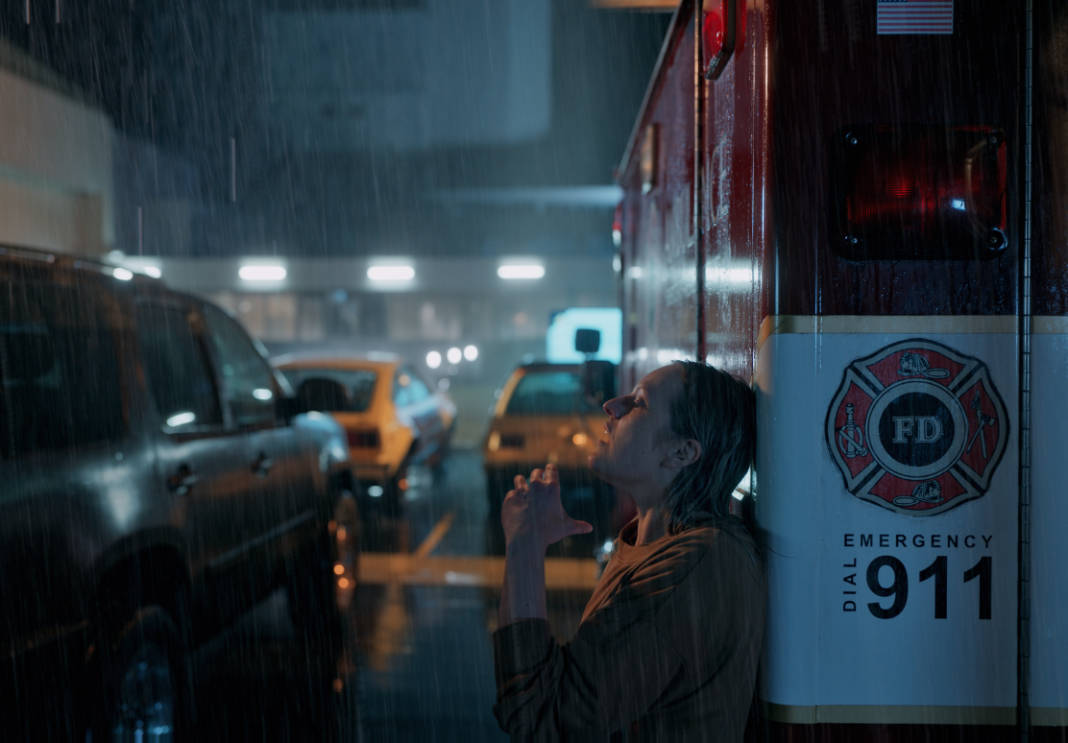
VT: Did you do a lot of research into the tech or optics that Griffin uses to become invisible?
Leigh Whannell: I did, actually. I went and talked to a bunch of scientists with the production designer, who all said that this could work. It was something… because I wanted the tech in the film to feel so grounded; I needed to have some basis in reality. Research is where that reality comes in. The same thing with Upgrade. When the chip is installed in the guy’s neck, that was something I researched, and you get the okay from people that “Yes, this can be a plausible thing.” For me, it’s just more compelling when it’s plausible.
VT: I don’t want to spoil anything because there are a lot of twists in this movie, and I want to keep them as a surprise, but you do leave things at the end a little vague and open for interpretation, so is there something more you might want to do with this premise or Liz’s character or anything like that?
Leigh Whannell: I have nothing yet. I just don’t think about that stuff, I promise you, and I’m not even dodging the question. I am so superstitious. If you knew how superstitious I was in real life, you would laugh at me. There’s so much voodoo involved with moviemaking and releasing a movie and getting people to see it that I feel like thinking about a sequel before the original has been released is a way to anger the movie gods, and that’ll ensure that your movie will be seen by nobody. The way that I counteract this is just by avoiding any thoughts of a sequel. I just push them out of my mind. I always feel that any reporter or journalist that I talk to I feel like they don’t believe me when I tell them that.
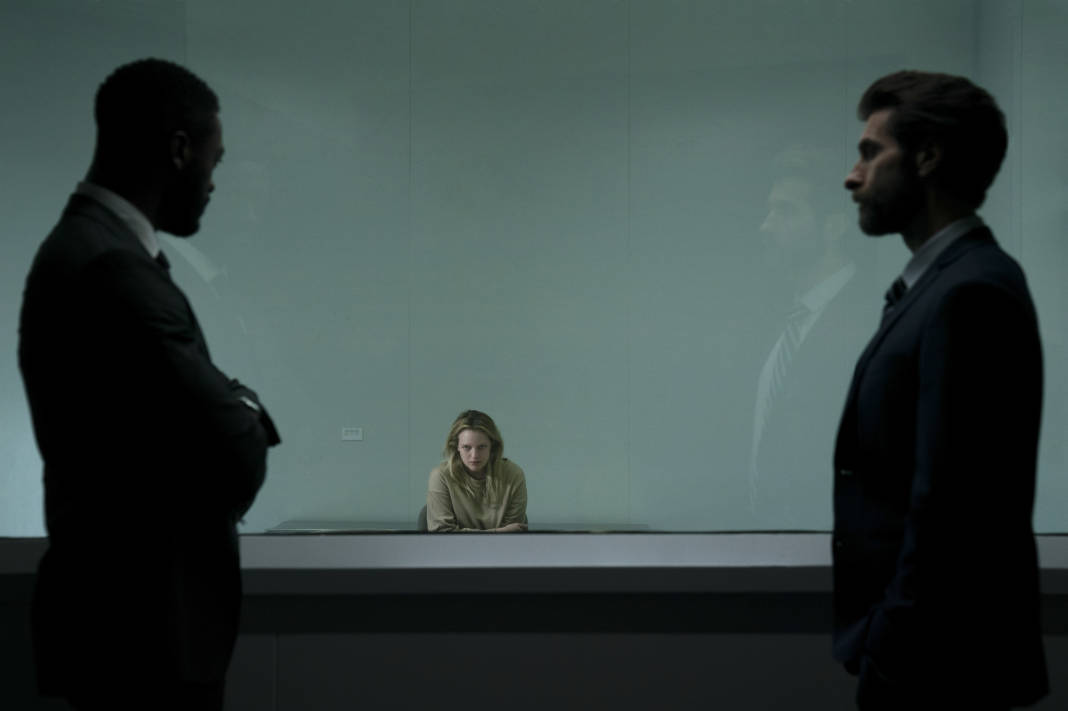
VT: I interviewed you for the first Saw and the first Insidious, so I believe you…
Leigh Whannell: I can tell you on the lives of my children, I never 100% think of a sequel ever. I don’t start thinking about a sequel until the first film is well and truly out. Usually, it’s other people who bring it up. If a film does well, they’ll start asking you about a sequel. It’s never something that’s initiated by me. I wouldn’t lie to you.
VT: I believe you, but it’s funny when you have something like The Mummy where Universal was planning a whole universe even before the movie came out.
Leigh Whannell: Right, yeah, well, best-laid plans and all that. In a selfish way, I guess I’m glad that no other plans worked out because I got to make this film.
VT: Can I ask you if there are any plans for Insidious? I’m not sure if you knew about this, but someone created an entirely fake IMDb page for an Insidious prequel directed by James, and I had to ask him about that because it looked very authentic.
Leigh Whannell: Oh, wow, no. People do that all the time. It’s easy to do with IMDb. No, I have no idea about that. I’ve been so busy making this film that I haven’t had a chance to have that conversation about Insidious, but it’s been so fun making those films. I had a good time getting to know Jason through those movies, but I’m kind of set on this path of directing right now. I feel like I want to follow this road wherever it goes, however long it goes.
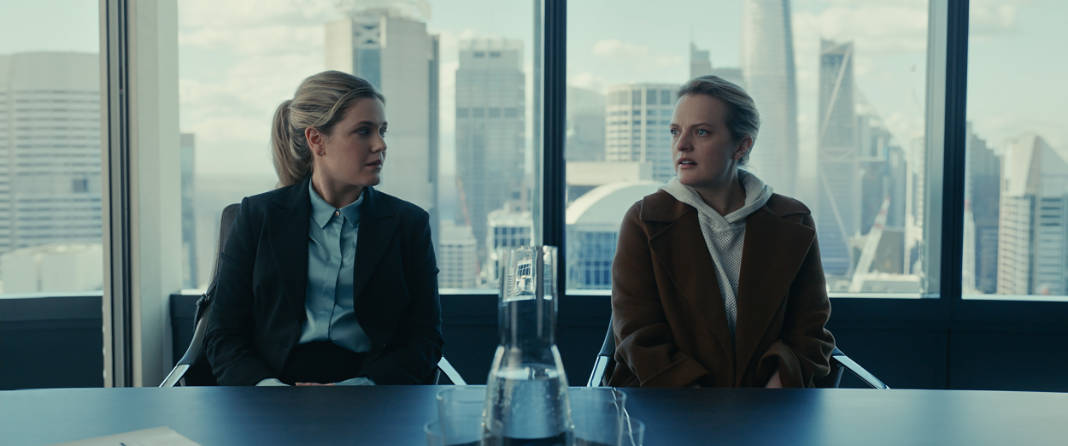
VT: Having known you and James since that first Saw movie, I love the trajectory that you’re both taking, especially after a couple of things like Dead Silence.
Leigh Whannell: Yeah, me, too. It’s been amazing to watch James take off into the stratosphere and start directing these blockbusters. It’s what he’s always wanted to do, so watching him achieve his dreams is amazing. For me now, I feel like I’m ten years behind him. I’m just making these movies and starting to really learn about directing. I still feel like a film student, but I’m really enjoying it. That’s for sure.
Whannell’s The Invisible Man opens in theaters on Friday, February 28, with previews starting Thursday night.
